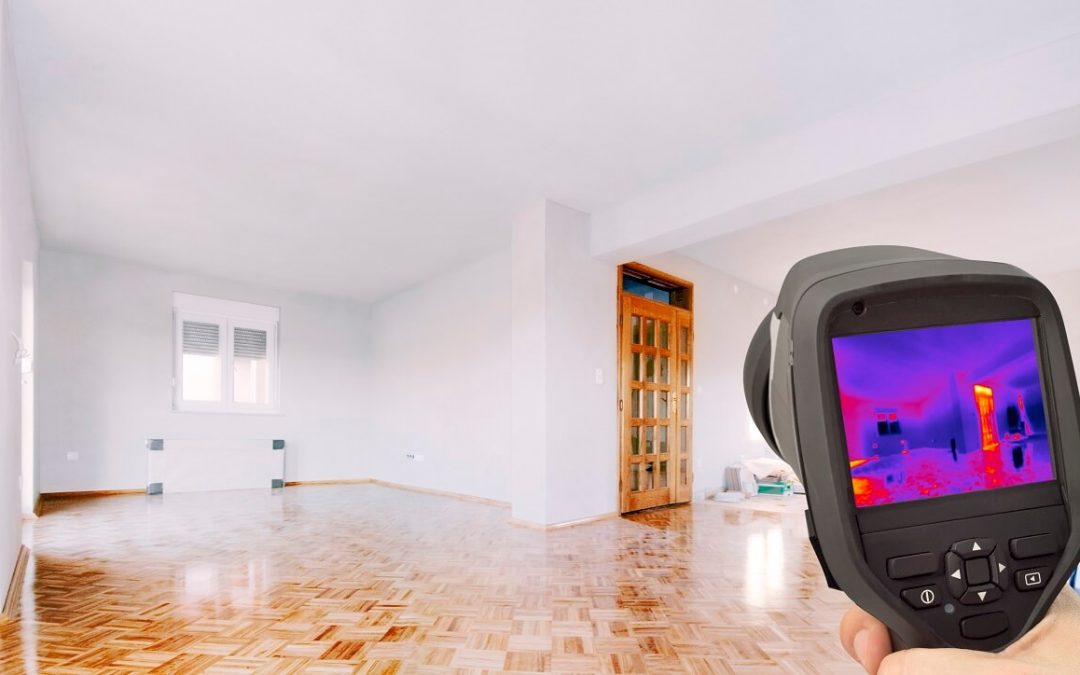Thermal imaging measures how much heat energy an object emits. A thermal camera detects and translates the heat signature of an object or area into a thermal image. Warm temperatures are displayed in red and orange, while cooler temperatures are blues. Being able to see the temperatures throughout a property offers a trained inspector more information about the condition of a home. Thermal imaging in home inspections provides insight into problems that may not be visible to the naked eye.
Why Use Thermal Imaging in Home Inspections?
Thermal imaging can be used to look for certain types of problems in a home. This type of technology helps inspectors perform a more complete and thorough inspection. Here are a few things thermal imaging might find.
Energy Efficiency
Homes that do not have adequate insulation will leak hot air in the winter months and cool air in the summer. For homeowners, this is a concern because they will spend significantly more to keep the house comfortable. A thermal camera is a valuable tool because it can “see” gaps or cracks that may permit airflow. These gaps are displayed as a temperature that is different from surrounding areas. The camera can also be used to detect areas of missing insulation.
Electrical Problems
The electrical system in a home generates heat but the temperature should be low and remain consistent. Thermal imaging can be used to scan the temperature of components of the electrical system throughout the house. The inspector will examine the circuit panel and may look at outlets to detect hot spots. If one area shows up as warmer than others, this indicates a problem. Because electrical issues can lead to house fires, it’s important to discover hot spots and make repairs.
Moisture Problems
Moisture in the home poses a threat to your property and your health. Water damage often occurs with leaking pipes or leaks in the roof and can go undetected for years. Unless you see water stains or mold growth, you may not be aware there is a moisture problem. Moisture in a home will show up in a thermal scan as a cooler spot, relative to the surrounding areas. If the house has mold, thermal imaging can help the inspector identify the source of the leak.
Using Thermal Imaging in Home Inspections
Although thermal imaging is often part of a home inspection, not every inspection company offers this service. When scheduling an inspection, ask if they use a thermal camera to examine the property. A home inspector who uses thermal imaging will often include the images and detailed information about the issues or concerns in your home inspection report. Thermal imaging helps to identify problems that might otherwise go unnoticed.
JVC Home Inspection provides home inspection services to customers in Central Florida. Contact us to request an appointment.

